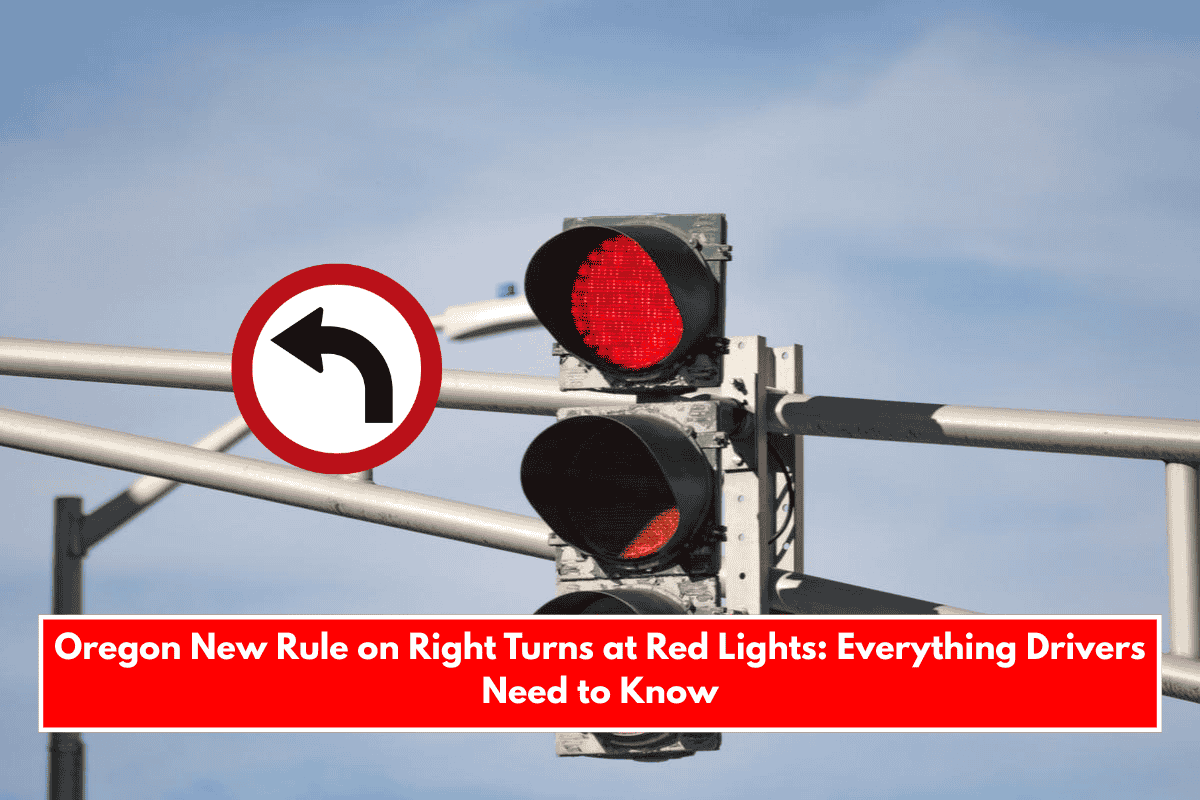Oregon, like most U.S. states, has long allowed drivers to make right turns at red lights after coming to a complete stop and yielding to pedestrians and cross traffic, unless a sign specifically prohibits it. However, with growing concerns about pedestrian safety and evolving traffic patterns, Oregon has recently updated its rules regarding right turns on red. Here’s a comprehensive overview of what drivers need to know in 2025.
What Is the Current Law?
- In Oregon, it is legal to make a right turn at a red light or red arrow unless a sign is posted prohibiting the turn.
- Before turning, drivers must come to a complete stop—meaning the vehicle must cease all movement—before proceeding.
- Drivers must yield to all pedestrians in the crosswalk and any oncoming traffic that has the right of way.
Key Changes in the New Rule
While Oregon has not enacted a statewide ban on right turns at red lights, there is a growing trend toward restricting these turns at certain intersections, especially in urban areas with high pedestrian activity. The new rule focuses on:
- Increased Use of “No Turn on Red” Signs: More intersections, particularly in downtown Portland and other busy urban centers, are being equipped with signs prohibiting right turns on red. These changes are aimed at improving pedestrian safety and reducing conflicts between vehicles and non-motorized road users.
- Emphasis on Complete Stops: Enforcement agencies are reminding drivers that a rolling stop does not meet the legal requirement. The vehicle must come to a full stop before the crosswalk or stop line.
- Right Turns from Designated Lanes Only: Oregon law requires that right turns be made from the lane closest to the right curb or edge of the roadway. Turning right on red from any other lane is not permitted unless that lane is specifically marked for right turns.
- Yielding to Bicyclists: Drivers must check for and yield to bicyclists in bike lanes before making a right turn, as well as yield to any pedestrians in the crosswalk.
How the Rule Is Enforced
- Signage: If right turns on red are not allowed at a particular intersection, there will be clear signage stating “No Turn on Red.” If there is no sign, the default rule allows the turn after a complete stop and yielding as required.
- Police Enforcement: Law enforcement agencies are increasing patrols at intersections with high pedestrian traffic to ensure compliance, especially with the complete stop and yielding requirements.
- Automated Enforcement: Some intersections may use red-light cameras to monitor compliance with right-on-red rules.
Practical Guidance for Drivers
- Always Stop First: Even if the intersection appears clear, you must come to a complete stop before turning right on red.
- Check for Signs: Look for “No Turn on Red” signs before making the turn. If the sign is present, you must wait for the green light.
- Yield to Pedestrians and Cyclists: Always yield to pedestrians in the crosswalk and check for bicyclists in bike lanes before turning.
- Use the Correct Lane: Make the right turn from the lane closest to the curb unless another lane is specifically designated for right turns.
- Be Patient: If visibility is limited or the intersection is busy, wait until it is completely safe to turn.
Why the Change?
The move to restrict right turns on red at more intersections is part of a broader effort to reduce pedestrian injuries and fatalities. Studies have shown that allowing right turns on red can increase conflicts between vehicles and pedestrians, particularly in dense urban environments1. By limiting these turns, Oregon aims to make streets safer for everyone.
Oregon Right Turn on Red Rules (2025)
| Rule | Status in Oregon 2025 |
|---|---|
| Right turn on red allowed? | Yes, unless posted otherwise |
| Complete stop required? | Yes |
| Yield to pedestrians/cyclists? | Yes |
| “No Turn on Red” signs increasing? | Yes, especially in urban areas |
| Right turn from any lane? | Only from rightmost or marked |
| Enforcement | Signage, police, cameras |
Oregon drivers can still make right turns at red lights in most situations, but increased restrictions and enforcement are being implemented to protect pedestrians and cyclists. Always check for signs, come to a complete stop, and yield to those with the right of way before turning. Staying informed and cautious will help ensure everyone’s safety on Oregon’s roads
Sources:
- https://en.wikipedia.org/wiki/Turn_on_red
- https://beavertonpolice.org/DocumentCenter/View/1663/Right-on-Red-2020—Did-You-Know
- https://www.oregon.gov/odot/forms/dmv/37.pdf
- https://www.reddit.com/r/oregon/comments/1jbz4fh/traffic_right_on_red_update/
- https://www.oregon.gov/odot/engineering/documents_trafficstandards/traffic-line-manual.pdf













